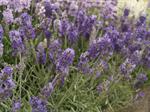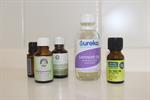
Learn more about Aromatherapy, Aromatic oils, herbal oils
Aromatherapy oils can vary greatly, even from one variety of the same species to another. One variety may contain toxic chemicals; while another variety of what you think is the same plant, might not.
For safe aromatherapy; it is important to know and understand plants and their chemical constituents. This is not something you can learn through study alone; but this course does provide a foundation for proper learning through experience and learning that follows your studies.
Take lavender, for example:
There are several different types of plant that are commonly known as Lavender, and more than one of these plants are used to produce lavender oil. Oil distilled from True Lavender, or Lavandula angustifolia, is the highest quality lavender oil. However, lavender can also be distilled from Lavandula x intermedia and Lavandula latifolia. All three smell very similar, and can even be confusing for an experienced aromatherapist, but the chemical composition of Lavandula angustifolia is far superior to that of Lavendula x intermedia and Lavadula latifolia and is a much better therapeutic oil.
A reputable supplier will differentiate between the types in both the common name and the botanical name listed on the bottle, using Lavender for Lavandula angustifolia, Lavandin for Lavandula x intermedia and Spike Lavender for Lavandula latifolia. Some suppliers, however, will use the label Lavender for all types, and while not exactly dishonest, it is inaccurate. As a result, unless you are able to identify the oil by the botanical name, which should always be listed on the label, you can't be sure of what you are buying.
Another example is with Thyme. Sweet Thyme, Thymus vulgaris geraniol, is a relatively safe oil that can be used for colds and congestion. Red Thyme, Thymus vulgaris or thymol, is a very powerful herb and should only be used under the guidance of a trained aromatherapist. But, as many suppliers sell the oil as Thyme, it can be difficult to know what you are getting, unless you can identify the botanical name.
Duration: 100 hours
COURSE STRUCTURE
 There are 8 lessons as follows:
There are 8 lessons as follows:
1. Plant Identification
Understand the classification system used for naming plants and to be able to identify the family, genus and species names of plants used to produce essential oils. Define aromatherapy and its history, to understand how aromatherapy works, and the basic chemistry behind it.
2. Introduction to Aromatherapy
To define aromatherapy and its history and to understand how aromatherapy works, and the basic chemistry behind it
3. Essential Oils
Identify a range of essential oils, their uses and contraindications
4. Safe Use of Essential Oils
Ensure that essential oils are used in a safe and controlled manner.
5. Carriers
Identify what can be used as a carrier for essential oils and why they must be used.
6. Growing and Harvesting Herbs for Essential Oil
Identify methods which can be used to grow, and harvest herbs used in essential oil production.
7. Methods of Extraction
Identify methods used to extract essential oils from plants.Identify herbs and oils acknowledged as hazardous to people, and which should not be used in aromatherapy, or with great care.
8. Hazardous Herbs and Oils
Identify herbs and oils acknowledged as hazardous to people, and which should not be used in aromatherapy, or with great care.

WHAT YOU WILL DO IN THIS COURSE
- Undertake brief written report on what you understand about how plants are named
- Give the scientific names of ten different plants from which essential oils are derived.
- Give a brief summary of your knowledge of aromatherapy and essential oils.
- Understand how herbs are promoted to the public in order to sell them.
- Write an essay on the history of aromatherapy and essential oil use.
- Suggest different blends that can be used for insomnia and other complaints
- Suggest different blends that can be used for treating a head cold
- Discuss a range of oils that would be suitable for a travel kit
- Understand the use of aromatherapy for children.- List a range of oils that would be considered safe to use for children.
- Write a short essay on ways in which essential oils can be used.
- Understand the use of essential oils on animals.
- List a range of types of vegetable oils appropriate for use in massage and indicate what types of skin the oils are good for.
- Explain how oils enter the body and how a carrier will assist with this entry.
- Submit the bath oil blends from a Set Task along with instructions on how to use them in the bath and what conditions they are good for.
- Understand why some herbs tend to be collected in the morning, some before flowering, some during flowering, and others at various times of the year. What impact does this have on the essential oil?
- From catalogues collected, explain why some oils cost more others.
- Discuss different methods of oil extraction and list their benefits and disadvantages.
- Comprehend what is the difference between an essential oil and an aromatic oil
- Compile a detailed costing for processing herb materials to produce essential oils.
- List a range of essential oils that are not safe for use in aromatherapy.
- Discuss how essential oils can be used safely and ways in which they should not be used.
- Understand which essential oils may not be safe for use during pregnancy.
A great course for anyone wishing to learn more about the safe use of aromatherapy essential oils for healing and relaxation. This course provides an introduction to the safe use of Aromatherapy oils.
Essential oils are the backbone of Aromatherapy. Their effectiveness is dependent on their safe and proper use, as well as on the quality of the oil used. Oils work in a much more subtle way than many commercially prepared products and in many situations are more suitable for preventative treatment rather than cure.
WHAT NEXT?
Register to Study - Go to “It’s Easy to Enrol” box at the top of the page and you can enrol now.
or
Get Advice – Email us at info@acsedu.co.uk OR
Use our FREE COUNSELLING SERVICE to contact a tutor
CLICK TO CONTACT US